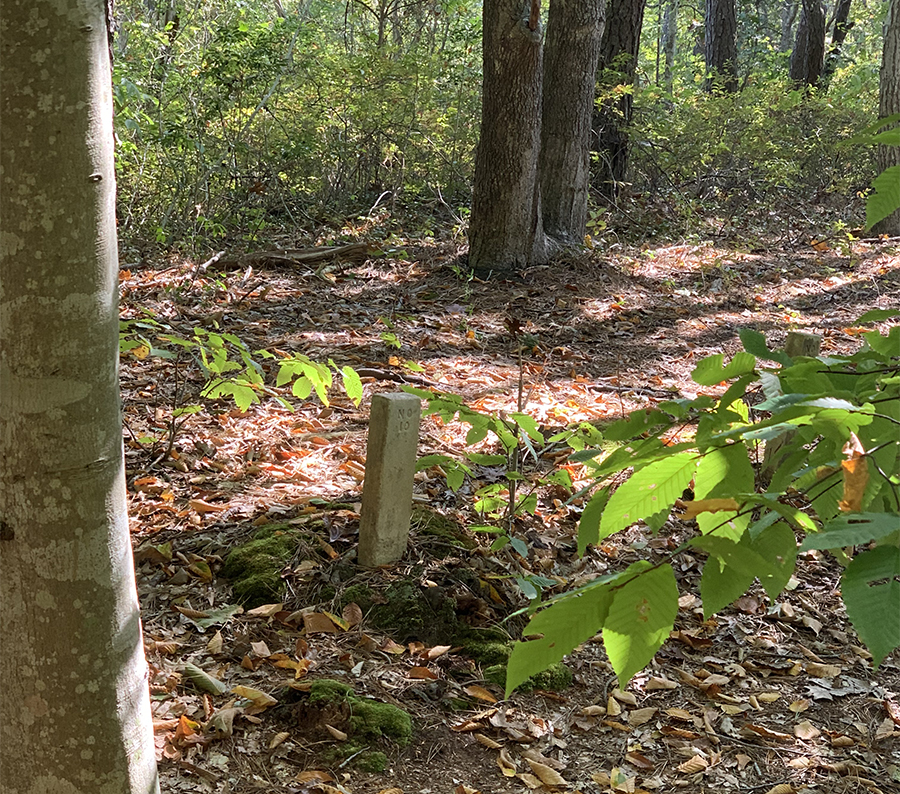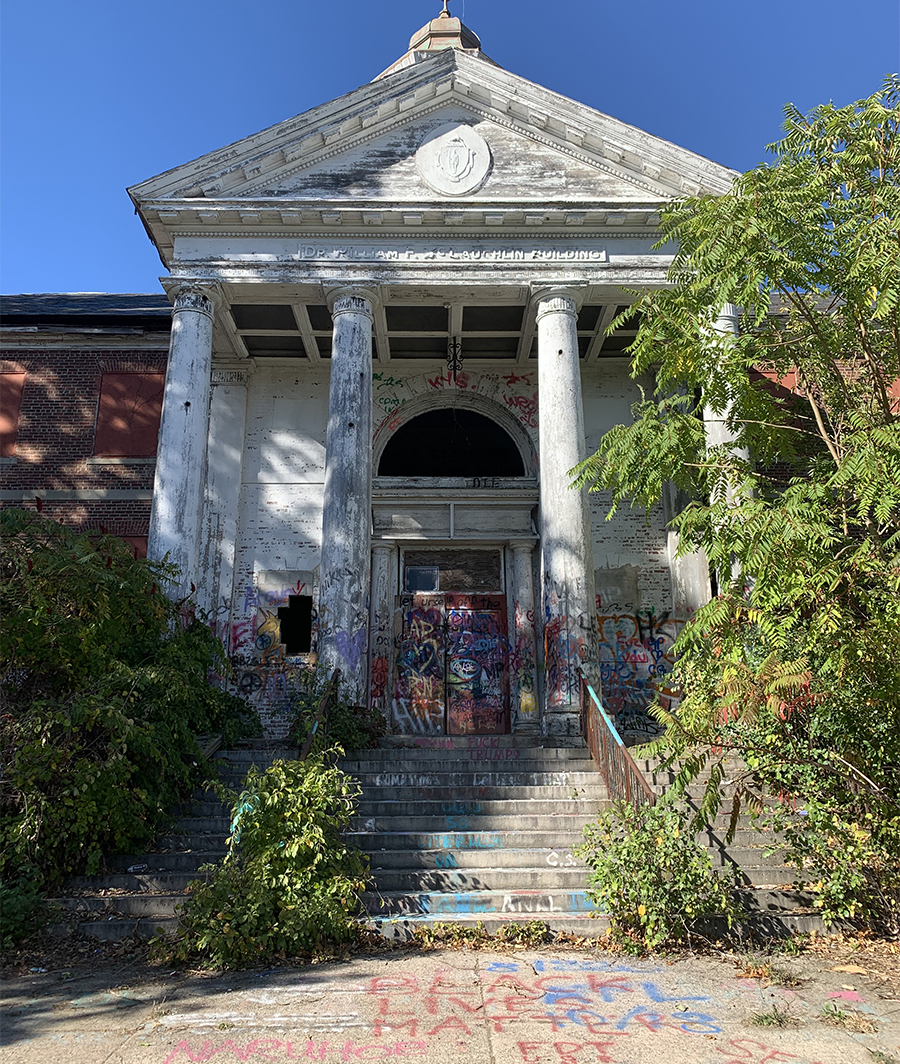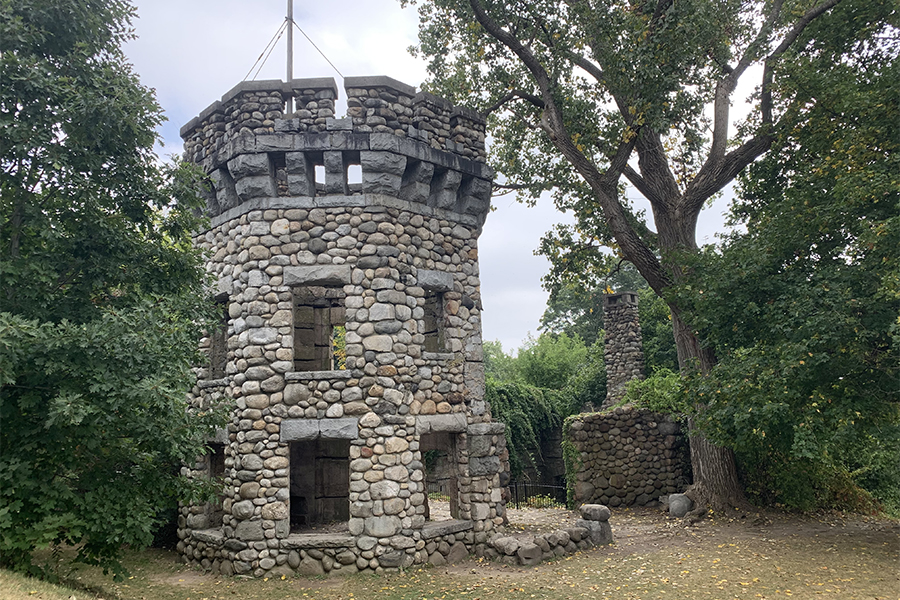Indulge Your Taste for the Macabre on a Tour of Abandoned Medical Facilities
Just be respectful while you're at it.

Photo of Foxboro State Hospital by Nathan Tavares
Abandoned healthcare facilities—from dingy asylums to halogen-lit hospitals with endless hallways—hold a place of honor in horror movies. And since your Netflix queue of spine-tinglers is running low (along with that bowl of fun-sized Snickers), now is the perfect time to explore some spooky places in person. But for those of us who are looking for a day trip without landing in trouble for trespassing, these four destinations around Boston are all publicly accessible. It should go without saying, but here’s a friendly reminder: Unless otherwise specified, stay out of the inside of these spots. And respect their history—though eerily beautiful, they are each reminders of tragic pasts.
Foxboro State Hospital
Foxboro, Massachusetts
Sometimes, scoping out abandoned buildings involves trekking timeworn paths through the woods. Or, like your exploration of the former Foxboro State Hospital, you’ll spot these oddities parked right on a main road. The hospital was first founded in 1889, then called the Massachusetts Hospital for Dipsomaniacs and Inebriates, as a treatment facility for alcoholic patients. Come 1910, the hospital switched focus to a standard psychiatric facility and operated as the Foxboro State Hospital until 1976.
Most of the buildings have been repurposed as housing and medical offices or otherwise demolished, except for a lone brick stunner, covered in ivy, across from the Offices at Chestnut Green. With a staircase leading up from the street to boarded-up archways, the building is said to be the hospital’s old auditorium and is in remarkable shape, perhaps owing to its perch right by the town’s fire department that wards off potential vandals. Check out the entrance, but heads up that the rear of the building is guarded by security cameras.
9 Payson Road, Foxboro

Photo of Pest House Cemetery by Nathan Tavares
The Pest House Cemetery
Provincetown, Massachusetts
As singularly difficult and weird as our current struggle with COVID-19 feels, there’s an uneasy symmetry with smallpox and the story of a building shrouded in the woods of Provincetown, in the Duck Pond and Clapp Pond conservation area. Around 1848, a small treatment facility—only about eight by ten feet—was built to quarantine smallpox-infected citizens away from the rest of town. The building was called the Pest House (short for pestilence) until it was knocked down around 1873 after the last resident passed away. During its history, fourteen people died there, and now an indentation in the earth and a few scattered timbers are all that’s left of the building. A cemetery with fourteen numbered grave markers once stood as a nameless reminder of the lives lost, though only four intact grave markers remain, some with coins left by well-wishers, as the cemetery cedes ground to the surrounding beech forest.
To get there, drive on Route 6E just past the turnoff to Shank Painter Road and park by the signs asking you to leash your dog. Follow the trail through the woods, past a stone marker and a barrier marked “Fire Road,” to an intersection. Take the right path, and then look for a faint foot trail immediately to the right. Follow the trail for about five minutes until you get to a small valley between two beech-grove topped hills. Tread the trail down a steep hill—careful, as it’s easy to slip on the leafy path—to find the cemetery in a serene clearing of trees.
Off Route 6E, Provincetown

Photo of Metropolitan State Hospital by Nathan Tavares
Metropolitan State Hospital
Waltham, Massachusetts
Tucked by apartment complexes in Lexington and just over the border in Waltham lies the last dilapidated building of the formerly mammoth complex of the Metropolitan State Hospital. You’ll find the Dr. William F. McLaughlin administration building with its grand columned entryway right by a parking area and dog park, surrounded by walking trails that border the Metropolitan Parkway. The brick building is slowly surrendering to ivy and brush, offering eerie beauty to onlookers, but just make sure you stay outside, as trespassing is both illegal and unsafe, thanks to the presence of crumbling floors and asbestos.
Opened in 1929 to provide both acute and long-term treatment for patients suffering from mental illnesses, Met State is not without a troubled past. From a class-action lawsuit alleging neglect, staffers fired for allegedly abusing patients, and even a murder on the grounds, the Met’s crumbling edifice is just one chapter in a story of healthcare facilities nationwide that failed the vulnerable populations they were meant to protect. The hospital closed in 1992 and some buildings were repurposed for the Avalon at Lexington Hills apartment complex, which first welcomed residents in 2007.
Near the Avalon at Lexington Hills, 1000 Main Campus Drive, Lexington, MA, metstate.com.

Photo of Bancroft Castle by Nathan Tavares
Bancroft Castle
Groton, Massachusetts
Just a short, easy hike from Route 40 in Groton, you’ll find the ruins of a gothic castle, complete with a round tower that rises from crest of the rolling Gibbet Hill. Surrounded by the picture-book perfect views of Groton and the surrounding cattle fields, this fairytale-like setting comes with some quirky backstory. In 1906, William Bancroft—a former mayor of Cambridge and a general during the Spanish-American War—started building a grand retirement home here, but soon ran out of money and sold the stone structure in 1918. Then, a physician converted the building into a private sanitarium where patients who could afford to fork over $20 per week could rest and recover in the fresh air. (Perhaps the medical treatments afforded only to the wealthy rings a bell, nowadays?) In the 1920s, patients came to the Groton Private Hospital, as it was renamed, seeking tuberculosis treatment, though in the 1930s it saw new life as a social spot for the Groton Hunt Club.
A Fourth of July fireworks mishap in the early 1930s led to a fire that ravaged the property, razing everything that wasn’t constructed of stone. Now, the ruins, including those of a massive fireplace, are open for the public to roam and are a fun backdrop for cozy fall picnics—or medieval-themed Instagram photoshoots, if that’s your thing.
Lowell Road, Groton


